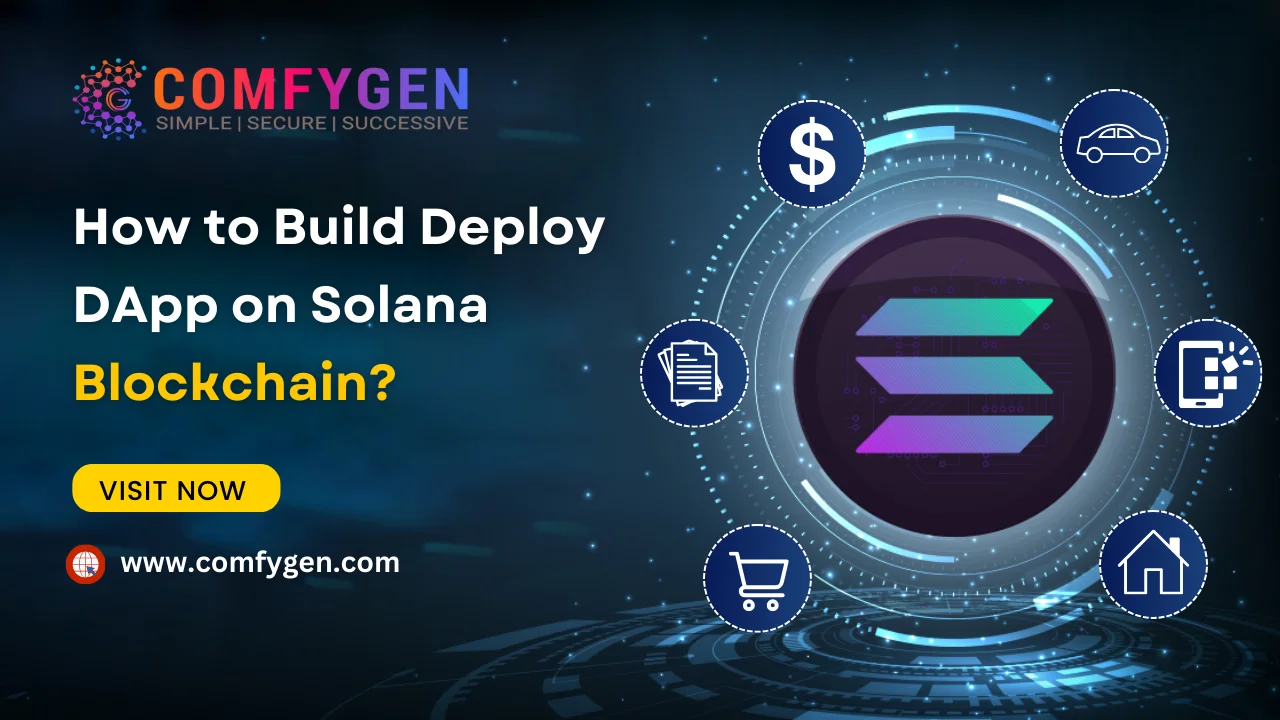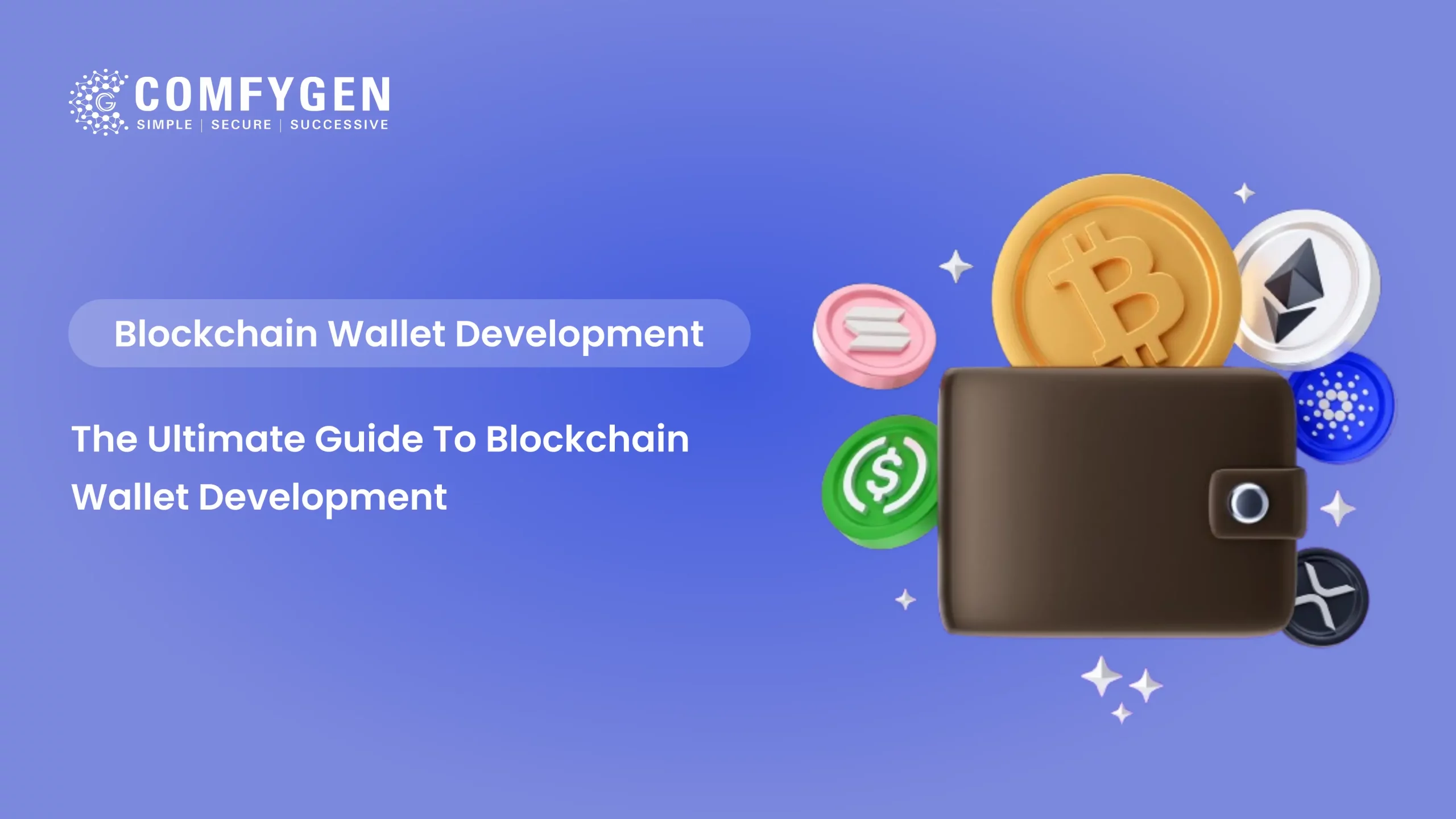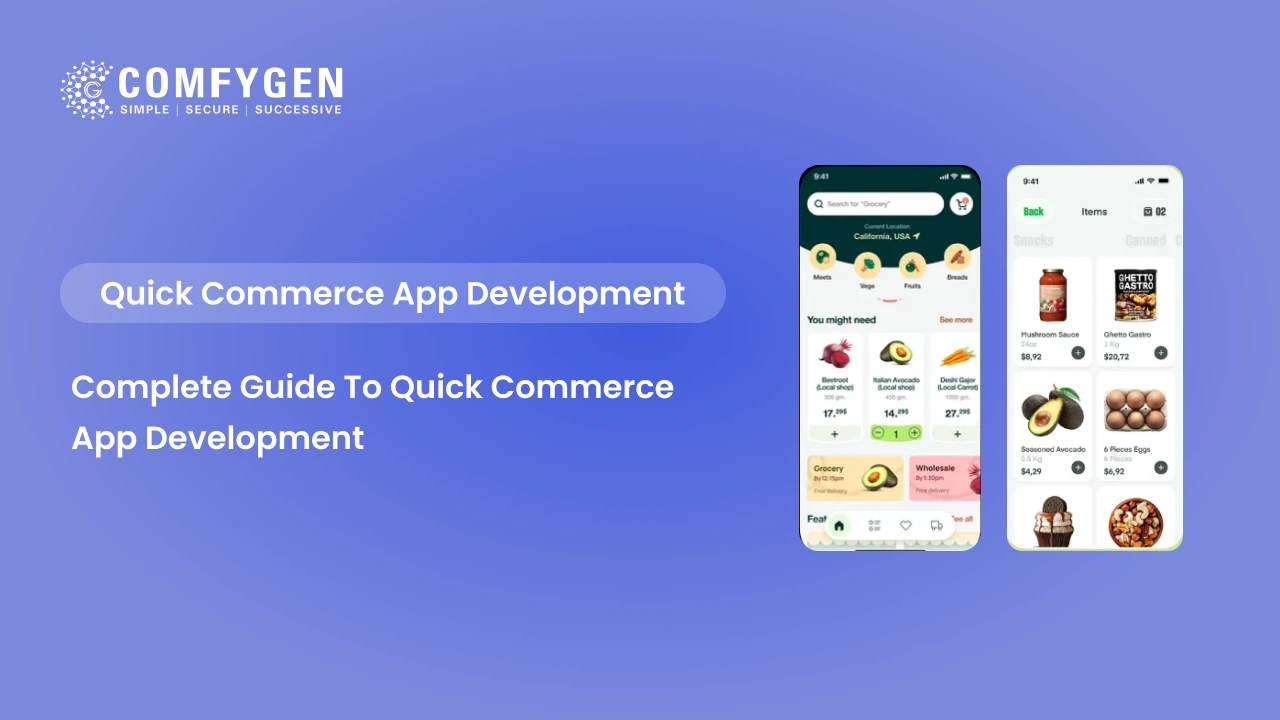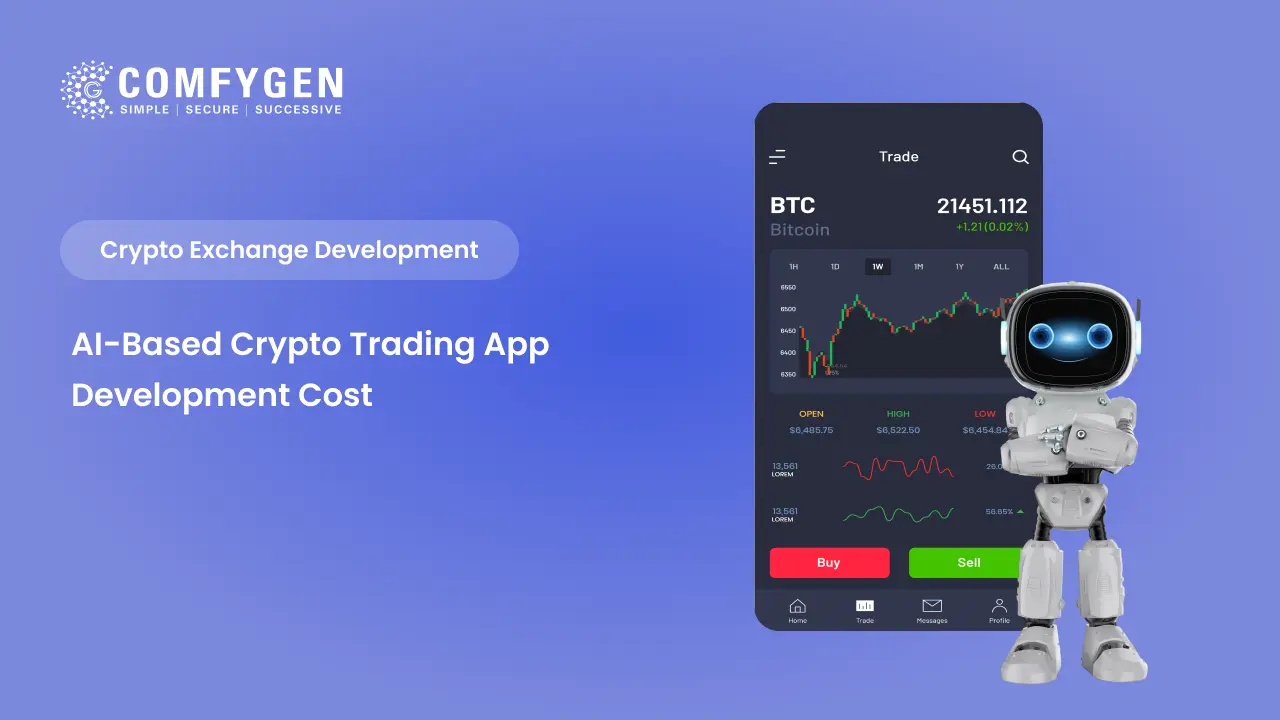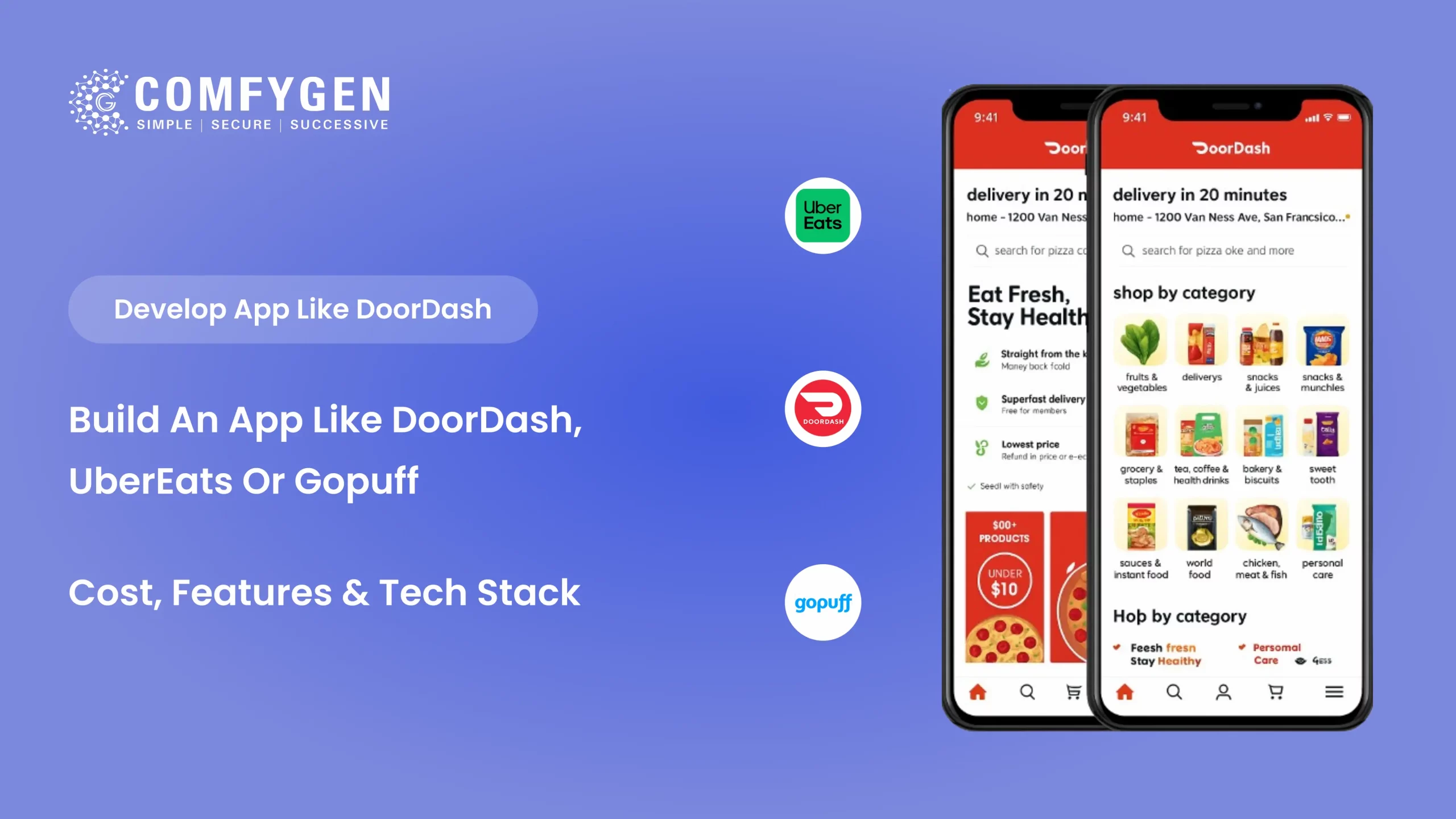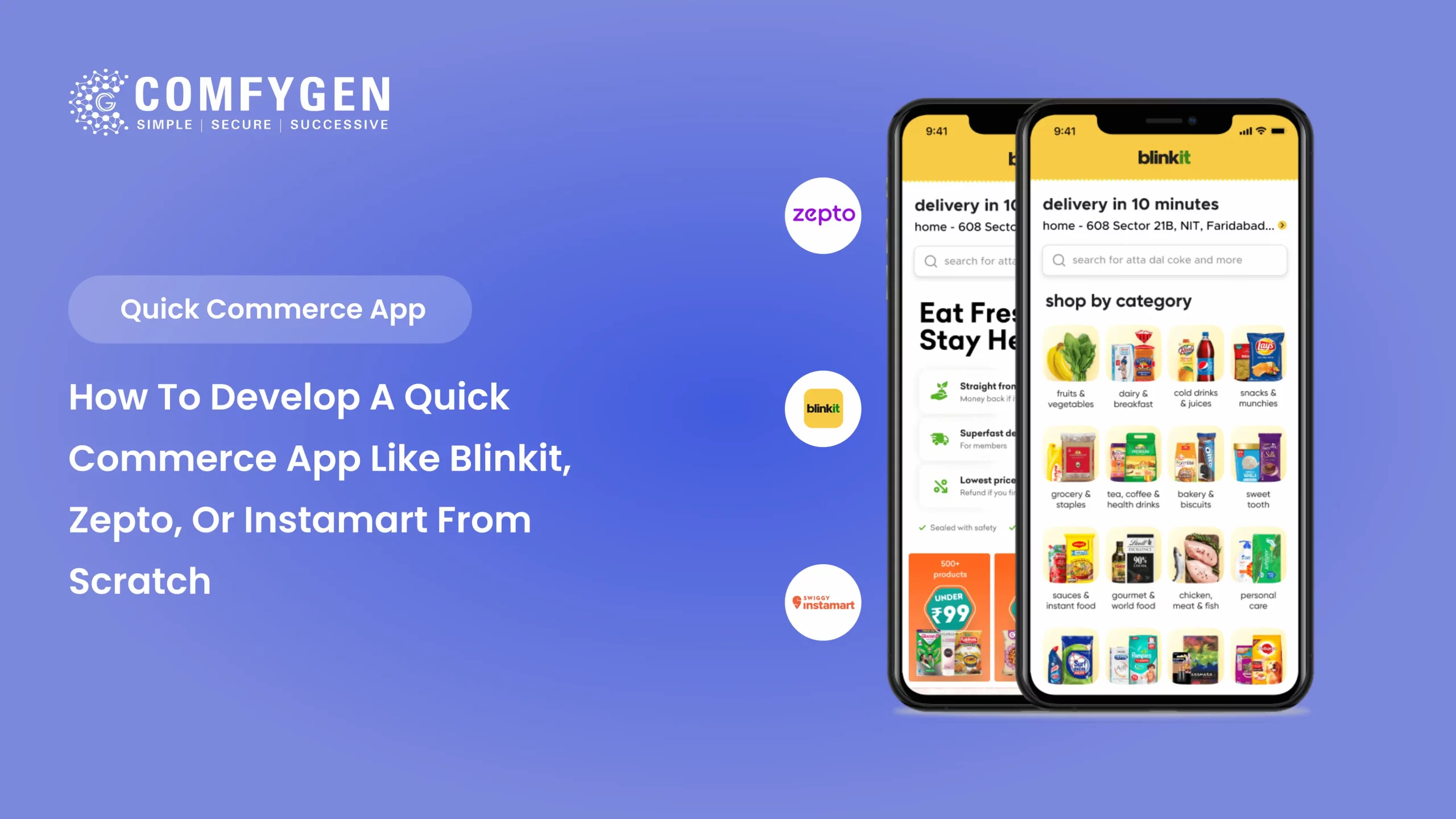How to Build Deploy dApp on Solana Blockchain?
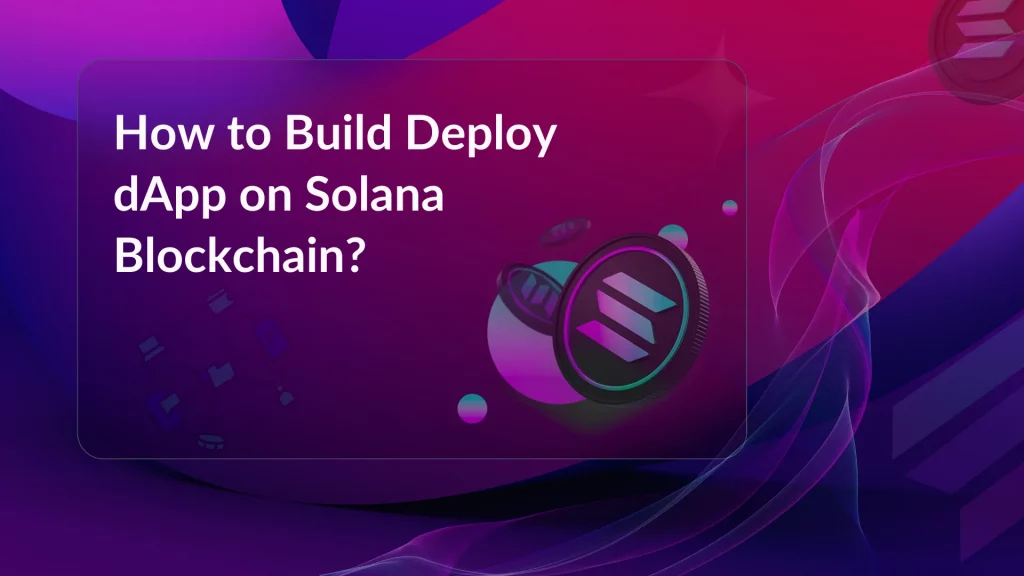
In the realm of decentralized applications (dApps), Solana blockchain stands out for its high performance and cost-efficiency. Building and deploying dApps on Solana offers scalability and efficiency, attracting enthusiasts and developers. Its revolutionary Proof of History (PoH) consensus mechanism enhances network efficiency, surpassing traditional blockchain architectures. This guide demystifies Solana blockchain development, detailing its features, command-line interface (CLI), Rust programming language usage, and smart contract implementation. With Solana’s potential to impact the blockchain app development industry significantly, this step-by-step guide aids in navigating the journey of creating and launching dApp development services on the Solana blockchain.
Hire Solana’s Blockchain Developer to Build and Deploy Your dApp Now!
What is Solana Blockchain?
The Solana blockchain is a decentralized network introduced in 2017 by Anatoly Yakovenko. It operates as an open-source, public blockchain platform that distinguishes itself through its unique combination of consensus mechanisms, including Proof of Stake and Proof of History. This innovative approach allows Solana to achieve high scalability and transaction processing speeds.
At the core of the Solana network is its native cryptocurrency, SOL, which facilitates peer-to-peer transactions and serves as a means of value transfer within the ecosystem. Solana also supports the development and deployment of decentralized applications (dApps), enabling developers to utilize features such as smart contracts and non-fungible tokens (NFTs) within its ecosystem.
Overall, Solana aims to provide a scalable, efficient, and developer-friendly blockchain infrastructure, offering opportunities for various applications ranging from decentralized finance (DeFi) to gaming and beyond.
Understanding Solana Blockchain Development
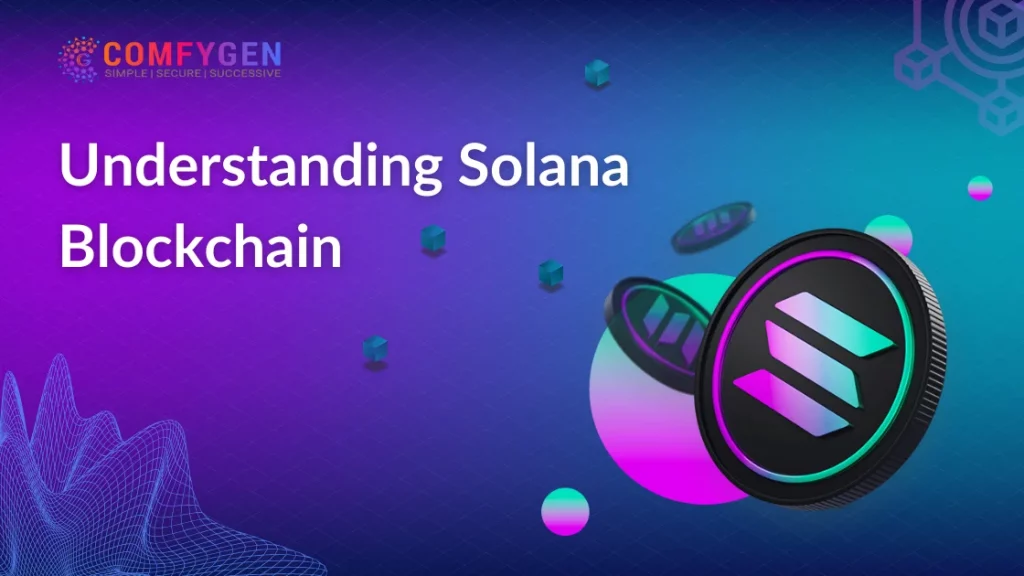
Solana represents a modern blockchain development platform distinguished by its rapid, scalable, and cost-effective structure. At its core, Proof of History (PoH) serves as a groundbreaking consensus mechanism utilized by Solana to timestamp transactions within a block. This advancement enables Solana to process up to 2500 transactions per second, making it one of the fastest blockchains in the global market.
This substantial increase in transaction throughput, coupled with its remarkable speed, makes Solana an appealing option. Furthermore, Solana boasts low transaction costs, a crucial factor fostering user-friendliness and widespread adoption. Solana also seamlessly integrates with the Ethereum Virtual Machine (EVM), enhancing compatibility for blockchain developers transitioning from Ethereum blockchain development services and fostering a broader ecosystem.
Developers primarily leverage the Rust programming language and the Solana Command Line Interface (CLI) to create and deploy smart contracts on the Solana blockchain. The platform’s flexibility extends to UI design and decentralized storage alternatives, providing a comprehensive toolkit for developing decentralized applications (dApps). Solana blockchain development embodies dynamism and is forward-thinking, boasting a robust infrastructure and developer-friendly features. These attributes position Solana as a promising player in the decentralized digital economy.
Looking for Blockchain App Developer? we provide highly skilled blockchain application developer team who make your project as per business goal.
Unlocking the Potential of a High-Performance Blockchain for Building on Solana
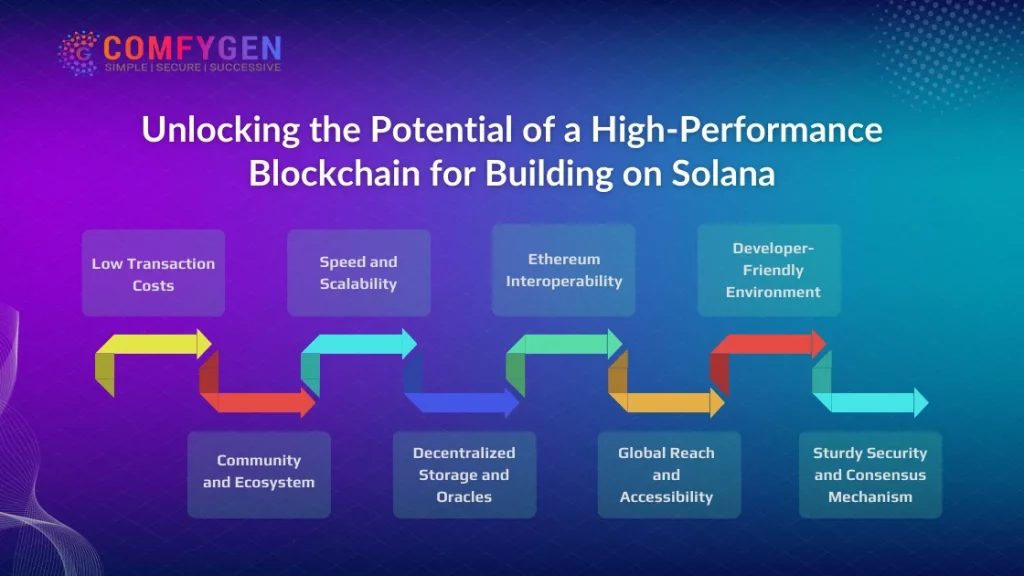
Similarly, when choosing the basis for their decentralized applications (dApps), developers must make a critical choice in the constantly growing world of blockchain development platforms. Moreover, Solana is a compelling option because of its innovative architecture and outstanding features. This post explores Solana’s developer-friendly ecosystem, low transaction costs, speed, scalability, and seamless interoperability to provide an extensive analysis of why developers should think about building on it.
Low Transaction Costs
Solana is well known for its economic transaction model and speed. The platform is a desirable choice for both developers and users due to its minimal transaction fees. On certain blockchain networks, high fees may operate as an entry barrier, preventing general adoption and usage. To solve this issue, Solana offers developers a cost-effective setting to implement their dApps.
As the gaming and content creation industries have demonstrated, low transaction costs are especially important for projects involving microtransactions. Because of Solana’s dedication to charging reasonable fees, blockchain developers can produce applications that are both profitable and provide a smooth user experience.
Speed and Scalability
The main features of Solana are its remarkable speed and scalability. In contrast to conventional blockchain networks, Solana makes use of a special consensus technique called Proof of History (PoH). Before a transaction is added to a block, Proof of Hash (PoH) datestamps it, ensuring an unchangeable and verifiable sequence of events.
This invention greatly reduces latency by doing away with the requirement for nodes to agree on transaction orders. With a transaction scale of up to 2500 transactions in 2d, Solana is an impressive device. Because of its speed, Solana is one of the fastest blockchains in the world and is an exquisite alternative for packages that require almost immediate transaction confirmation times.
Proof of History is being used by Solana in the first-rate for having an average block time of 600 milliseconds. The transaction costs are about $0.00025. On the opposite hand, Bitcoin makes use of Proof of Work (PoW) and has an average block time of about 10 mins, with a transaction pace of 4–7 transactions as per 2nd (TPS).
In stark evaluation of Bitcoin’s slower transaction processing and higher related charges, Solana’s pace, performance, and fee effectiveness demonstrate the revolutionary method that Solana brings to the blockchain space. Solana’s speed distinguishes it for use cases requiring brief transaction processing, including gaming, high-frequency buying and selling, and other similar applications.
Ethereum Interoperability
It has been found that an average block time is less than 30 transactions per second (TPS) with Ethereum. However, Solana provides smooth compatibility with the Ethereum Virtual Machine (EVM), acknowledging the significance of interoperability within the blockchain domain.
Because of this, builders can switch and put in force their Ethereum-based clever contracts on Solana without having to make any essential modifications. Solana’s interoperability makes it less difficult for builders to take advantage of each platform’s benefits. Developers can benefit from Solana’s greater pace and scalability even as getting access to the extensive Ethereum surroundings, making it a win-win scenario.
Developer-Friendly Environment
Solaris offers a robust and developer-friendly atmosphere due to the fact its architecture has been created with builders in mind. The strong and green Rust programming language can be utilized by builders to create clever contracts on Solana Blockchain Development.
Rust utilization improves the developer experience and adds to the platform’s universal performance. Moreover, the deployment and control of clever contracts are made simpler via the Solana Command Line Interface (CLI). Because of its ease of use, builders can pay more attention to the innovative aspects of their tasks rather than figuring out complicated technical info.
Community and Ecosystem
A blockchain platform’s potential to guide a vibrant and lively community is tested with its aid. Developers, validators, and different stakeholders have actively contributed to the development of Solana’s thriving ecosystem. Many tasks that continuously improve the Solana display the network’s spirit of cooperation.
The ecosystem of Solana incorporates a wide variety of sectors, which include gaming, finance, decentralized identification, and others. Because of this diversity, developers are able to work with like-minded people in a variety of domains and explore a wide range of applications.
Decentralized Storage and Oracles
Solana can handle decentralized storage and oracles in addition to standard transaction processing. The decentralized garage is critical for decentralized packages (dApps) that want a secure, censorship-resistant facts garage. The atmosphere’s overall resilience and reliability are improved via builders’ capability to combine those features into their programs because of Solana’s integration with decentralized garage answers.
Oracles are essential to Decentralized Finance Development and many other applications because they feed smart contracts with external data. Developers now have even more options because of Solana’s dedication to supporting oracles, which makes it possible to create complex dApps.
Global Reach and Accessibility
Solana is attractive to developers looking to reach a large user base because of its accessibility and global reach. Because of the platform’s infrastructure’s global reach, users can access it with minimal latency. This accessibility on a global scale is especially helpful for projects that want to engage users and be widely adopted.
Furthermore, Solana’s efforts to connect the blockchain space with traditional finance reflect its dedication to promoting inclusivity. Decentralized identity and tokenization of physical assets are two initiatives that help create a more open and integrated financial ecosystem.
Security and Consensus Mechanism
Validators make contributions to the community’s decentralized structure and are important to its security. An active community of validators combined with creative consensus mechanisms creates a safe and dependable foundation on which developers can build. Developers and users who have interacted with the platform are inspired with self-assurance by using Solana’s determination to uphold the highest security and protection standards.
Because of Solana’s unequaled pace, scalability, affordability, and developer-friendly environment, builders have chosen to build on it. Solana’s fame as a blockchain development platform is cemented via its compatibility with Ethereum, which assists with decentralized storage and oracles, active network, robust safety, and global accessibility. Solana is a shining example for developers looking to realize the full potential of decentralized applications in a quick, safe, and creative setting as the blockchain space develops.
Build Deploy dApp on Solana blockchain Today!
How Does Solana Network Work?
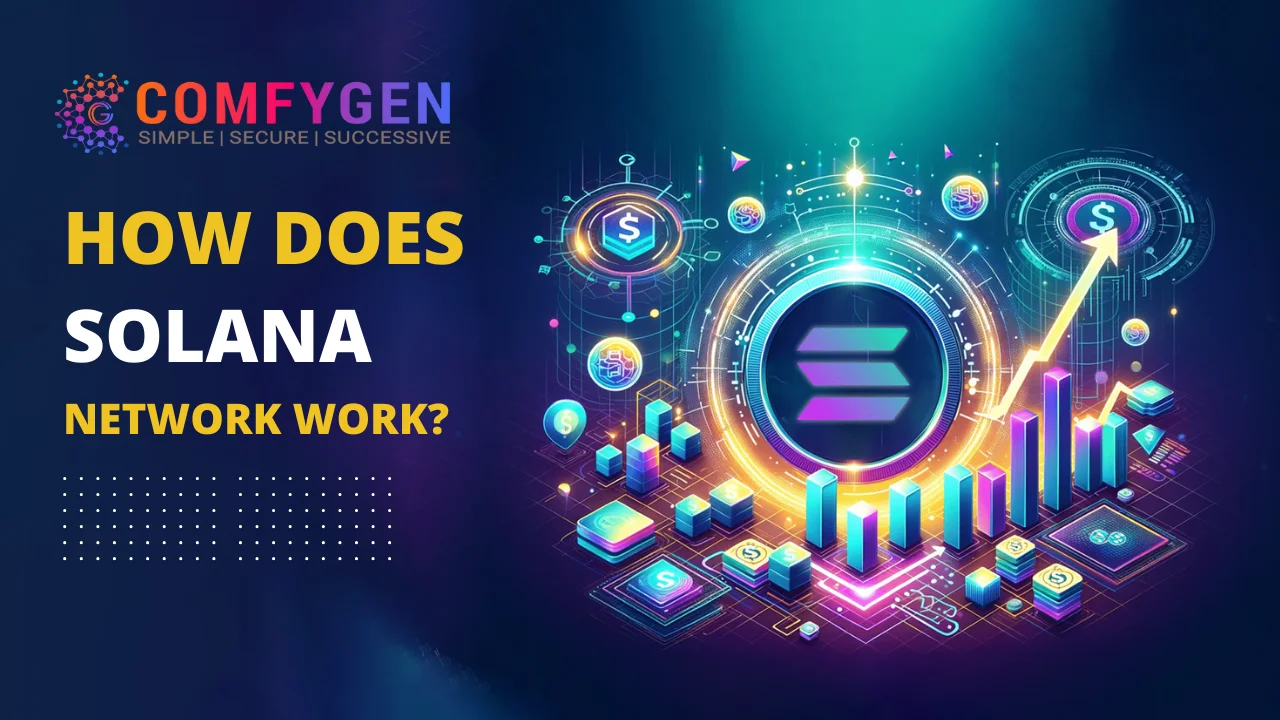
Solana functions as a scalable, fast blockchain protocol that was created as a quicker substitute for conventional cryptocurrencies. This network solves overall performance issues by permitting the improvement of scalable dApps development solutions. The Proof of Stake (PoS) protection mechanism is used in conjunction with the Proof of History (PoH) consensus mechanism on the SOL network. PoH creates automatically ordered transactions, which serve as the platform’s internal clock.
The unique feature of the Solana blockchain is its capacity to supply historical records via Proof of Haste. This functions similarly to a cryptographic timestamp. The mechanism requires a particular set of steps to be evaluated in order for it to function as a high-frequency Verifiable Delay Function. Evaluation-pending transactions or events are assigned a distinct hash and a publicly verifiable counter, similar to a cryptographic timestamp. This counter adds to the Solana network’s efficiency by determining the exact moment of each transaction or event.
According to the most current evaluation, Solana has a marketplace capitalization of approximately $30.79 billion. It is making it the most successful permissionless blockchain on the globe. Two hundred physically distinct nodes are supported by the platform, which adds to its decentralization and resilience.
Solana’s market strength is further demonstrated by its 20.88% 24-hour trading volume growth. For developers looking for speed, scalability, and security in the decentralized ecosystem, Solana stands out as a compelling blockchain development platform. However, this is because of its distinct consensus mechanisms, market performance, and effective transaction handling.
Want To Hire Blockchain Developer?
How to build a dApp on Solana Blockchain?
Building a dApp on Solana involves several steps, from setting up your development environment to deploying your smart contracts. Here’s a step-by-step guide with examples and code snippets:
Step 1: Setup Development Environment:
- Install Node.js and npm.
- Install Solana Command Line Tools (Solana CLI).
Step 2: Initialize Solana Project:
- Run
solana initto create a new Solana project.
Step 3: Write Smart Contracts:
- Use the Rust programming language and Solana’s SDK (Software Development Kit) to write smart contracts.
- Example smart contract code:
// File: my_dapp.rs
[no_mangle]
pub extern "C" fn my_dapp_entrypoint() {
// Entry point logic
}
Step 4: Compile Smart Contracts:
- Compile Rust code to BPF (Berkley Packet Filter) bytecode.
- Example command:
rustc --target bpf my_dapp.rs
Step 5: Deploy Smart Contracts:
- Use Solana CLI to deploy compiled bytecode to the Solana blockchain.
- Example deployment command:
solana deploy my_dapp.so
Step 6: Interact with Smart Contracts:
- Develop frontend or backend applications to interact with deployed smart contracts.
- Use Solana’s JavaScript library or other compatible libraries.
- Example code snippet for interacting with a smart contract from JavaScript:
// Import Solana library
const anchor = require('@project-serum/anchor');
// Connect to Solana network
const connection = new anchor.web3.Connection('https://api.devnet.solana.com');
// Load deployed program
const program = new anchor.Program(myProgramId, myProgramKeypair);
// Invoke smart contract function
async function invokeSmartContract() {
// Call smart contract function
await program.rpc.myDappEntrypoint();
// Additional logic…
}
// Call function
invokeSmartContract();
Step 7: Testing:
- Write unit tests to ensure smart contract functionality.
- Use Solana’s testing framework or custom testing scripts.
Step 8: Deployment:
- Deploy frontend applications to hosting services.
- Ensure backend services are deployed and configured to interact with the Solana blockchain.
Important features of a Solana dApp
Decentralized programs (dApps) with specific capabilities that distinguish Solana in the decentralized atmosphere are hosted on a high-performance blockchain. The extraordinary functions of Solana dApps consist of the modern-day Proof-of-History (PoH) consensus mechanism and present-day protocols like Gulf Stream, Turbine, Pipeline, and Sea Level.
Proof-of-History (PoH)
Solana makes use of a unique consensus approach referred to as Proof-of-History (PoH) to provide secure and cryptographic timekeeping for its decentralized packages (dApps). PoH reduces the need to rely on other nodes’ timestamps as a trustworthy source of time throughout the network, potentially reducing problems in distributed networks.
As a high-frequency Verifiable Delay Function (VDF), PoH enables nodes to generate blocks one after the other without requiring them to first synchronize with the network as a whole. This special feature improves transaction processing speed and efficiency in the decentralized Solana environment.
PoH contributes to the integrity and reliability of the Solana blockchain by guaranteeing that transactions are precisely time-stamped and offering a verifiable and impenetrable sequence of events. PoH is positioned as a crucial component of Solana’s architecture by virtue of its combination with the VDF feature, which tackles issues with consensus, trust, and transaction ordering in a decentralized network.
Gulf Stream
Gulf Stream is a key component of the Solana blockchain that maximizes transaction processing because it runs without lag and depends as little as possible on the state of the mempool. Solana guarantees lower transaction loads on the mempool by carefully shifting transaction forwarding and caching to the network’s edge, improving the real-time performance of decentralized apps (dApps).
By reducing the overall amount of transactions in the mempool, this method enables validators to process transactions immediately. The focus Gulf Stream places on lowering mempool transactions greatly enhances Solana dApps’ general responsiveness and efficiency.
Gulf Stream’s contribution to Solana’s dedication to offering developers and users alike a fast, low-latency blockchain environment is highlighted by the streamlined transaction processing and reduced dependency on mempool status. Gulf Stream contributes significantly to enhancing Solana’s standing as a platform built for quick and effective decentralized application execution with these features.
Turbine
Solana’s independent block propagation protocol, known as Turbine, was created to improve block transmission between network nodes. During transmission, the Turbine breaks up blocks into smaller packets in order to maximize block propagation efficiency on its own.
This data segmentation reduces latency and enhances the Solana blockchain’s overall performance by enabling efficient and quick transfers between nodes. Turbine is Solana’s solution to the block propagation problems.
It guarantees dependable, efficient data transmission between network users and advances the platform’s objective of offering a scalable, fast, decentralized environment for applications. The protocol’s ability to optimize the data transfer processes within the network is highlighted by its independence and block packetization.
Read More: The Role of Blockchain Technology in dApp Development 2024
Sealevel
Sealevel is a special feature of the Solana blockchain that brings simultaneous smart contract functionality, allowing Solana programs, or smart contracts, to run simultaneously. It is specifically made for decentralized applications (dApps), enabling the concurrent execution of Solana smart contracts. This innovation improves the overall efficiency of Ethereum Blockchain-based Computing Platform for DApps by dramatically speeding up and validating the processes carried out by these smart contracts.
Solana dApps are able to execute smart contracts faster and with more validation when they utilize this. The ability to execute tasks simultaneously plays a crucial role in providing increased efficiency and responsiveness, establishing Solana as a platform that can manage intricate and simultaneous tasks within its decentralized ecosystem. Sealevel’s involvement in parallel execution is indicative of Solana’s dedication to offering developers and users a high-performance environment for interacting with decentralized applications on the Solana blockchain.
Pipeline
As a transaction processing unit in Solana’s architecture, the pipeline helps decentralized apps (dApps) function more efficiently and with optimal validation. The pipeline serves as a breakthrough in CPU design by enabling real-time validation between several nodes in the Solana network.
This feature is essential to improving Solana dApps’ transaction processing capabilities. Solana’s use of Pipeline allows for quick and effective validation, facilitating smooth communication amongst network nodes. Instantaneous validation improves transaction processing speed and responsiveness overall, which is consistent with Solana’s dedication to offering a high-performance blockchain environment.
The pipeline is a crucial component of Solana’s architecture as a transaction processing unit that helps the platform manage high throughput of transactions with lower latency. Developers looking to create scalable and effective decentralized applications on the Solana blockchain will find Solana to be a compelling option due to this innovation, which highlights the company’s commitment to streamlining the transaction validation process.
Tower BFT
Tower BFT is a Proof of History network (PoH) consensus algorithm, which is a crucial part of Solana’s network architecture. It is specifically designed for PBF networks. By utilizing Proof of History’s synchronized clock, Tower BFT attains consensus with minimal messaging overhead and transaction latency.
This algorithm is essential to Solana’s operation because it guarantees safe and effective consensus in a distributed network. Tower BFT enhances Solana’s capacity to manage high-throughput transactions in a decentralized and secure environment by leveraging Proof of History’s benefits. To put it simply, Tower BFT expands on Solana’s usefulness and strengthens its foundation, making it a solid platform for decentralized applications.
Archivers
A crucial component of Solana is archivers, which act as distributed ledger storage and enable validators to transfer data to a network of nodes. These portable Archivers offer a novel approach to safe and decentralized storage on the Solana blockchain, and they are subject to audits to guarantee data integrity. By providing a dependable and distributed storage solution for preserving the integrity and accessibility of blockchain data, this feature broadens Solana’s use cases.
Cloudbreak
Scalability on the SOL network is made possible by Cloudbreak, the Solana blockchain’s horizontally-scaled accounts database. Cloudbreak performs the role of a data structure and is designed to facilitate simultaneous read and write operations over the network. By improving the Solana blockchain’s overall performance, this creative solution positions it to handle a large number of transactions in a scalable and parallel fashion.
Moreover, the dApp ecosystem from Solana has a number of distinctive features that make use of cutting-edge protocols and creative consensus techniques. By utilizing Proof-of-History, timekeeping becomes secure and cryptographic, removing the need for trust in timestamp verification. Furthermore, the combined effects of Turbine, Gulf Stream, Pipeline, and Sealevel give Solana an unrivaled speed, scalability, and efficiency.
Build a dapp on Solana with Comfygen
What Can You Expect From The Solana DApp Development Services?
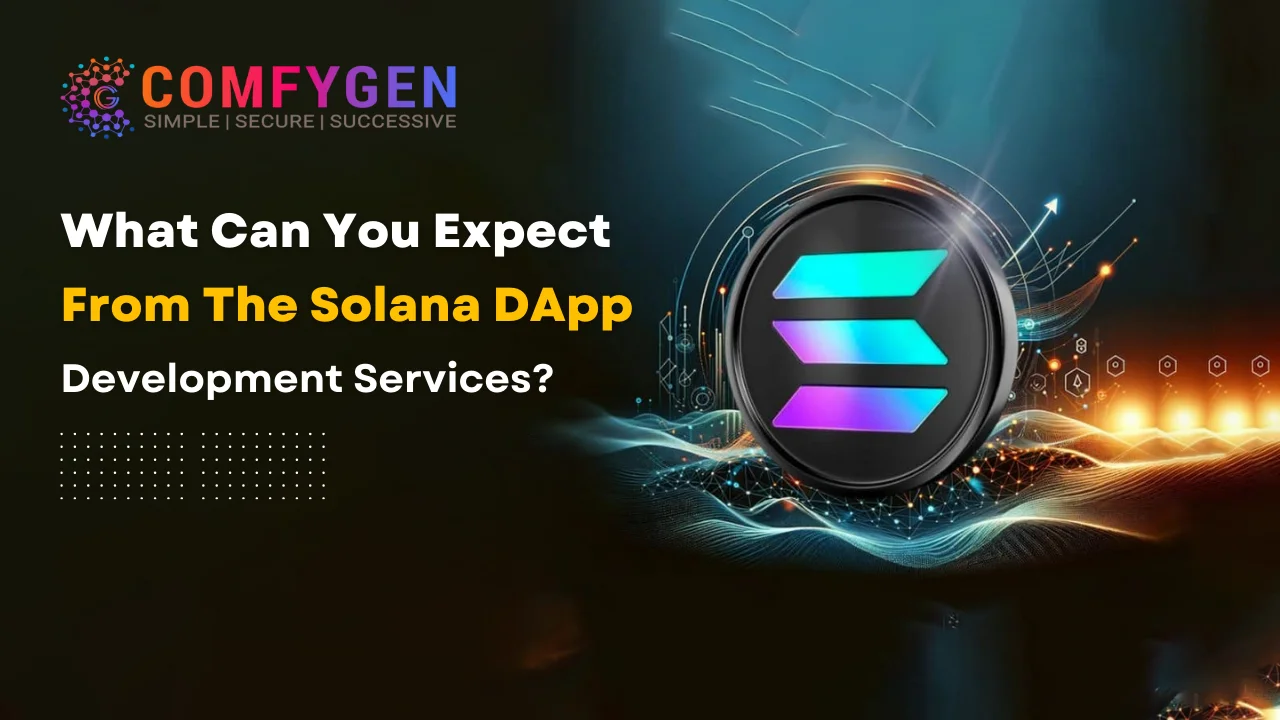
A wide range of options is available through Solana dApp development services to fully utilize the Solana blockchain. What to anticipate when using these services is as follows:
Customized dApp Development
Solana’s dApp development services offer right solutions, which can be specially designed to fulfill particular enterprise desires. Moreover, developers build particular decentralized apps (dApps) that aid your project dreams, whether they’re within the gaming, non fungible token development (NFT), decentralized finance (DeFi), or every other enterprise.
Optimized Performance
dApp development services concentrate on speed and scalability optimization by utilizing Solana’s high-performance architecture. By utilizing cutting-edge consensus techniques like Proof-of-History, transaction processing times are sped up, and user experience is optimized.
Smart Contract Development
Rust programmers, who are experts in developing software for Solana, craft smart contracts that are customized to your dApp’s features. Within the Solana blockchain development, these smart contracts development guarantee the safe and automated execution of predetermined procedures.
Interoperability and Migration
The development services offered by Solana dApps enable interoperability with Ethereum and other blockchains. To take advantage of Solana’s superior speed and efficiency while maintaining compatibility, developers can help migrate existing dApps from other platforms.
Integration with the Solana Ecosystem
The ecosystem of Solana provides a range of resources. The Solana dApp development services allow you to easily integrate your application with these tools: libraries, extra Solana-compatible services, and the Solana Command Line Interface (CLI).
Audits related to security
Security is very important. Comprehensive security audits are carried out by Solana dApp development services to guarantee that smart contracts and the dApp architecture as a whole follow best practices and are resistant to potential flaws.
Testing on Solana Devnet
Additionally, Solana dApp development services carry out a lot of testing on the Solana Devnet before deploying on the Mainnet. This makes it viable for builders to discover and attach any troubles, making sure of a seamless transfer to the surroundings.
Conclusion
Utilizing Solana dApp development services provides a holistic approach to creating, implementing, and managing decentralized apps on the Solana blockchain. By focusing on customization, optimizing performance, ensuring security, and offering ongoing support, these services empower developers and businesses to make the most of Solana’s capabilities for decentralized applications.
FAQs
In what way does Turbine aid in the spread of blocks on Solana?
Solana's block propagation protocol, known as Turbine, divides blocks into smaller packets and sends them between nodes independently. Streamlining block propagation and improving network efficiency optimizes data transfer.
Which programming language is most frequently used on the Solana blockchain to create dApps?
How do Archivers fit into the ecosystem of Solana?
Can a dApp be tested on Solana before being released on the Mainnet?
Is it required to deploy dApps using the Solana Command Line Interface (CLI)?

Mr. Saddam Husen, (CTO)
Mr. Saddam Husen, CTO at Comfygen, is a renowned Blockchain expert and IT consultant with extensive experience in blockchain development, crypto wallets, DeFi, ICOs, and smart contracts. Passionate about digital transformation, he helps businesses harness blockchain technology’s potential, driving innovation and enhancing IT infrastructure for global success.

